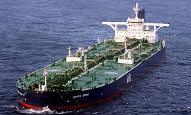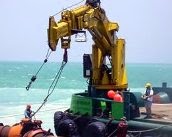Oil India Ltd. is studying an acquisition of Nigerian oil and gas assets owned by Royal Dutch Shell Plc, according to people familiar with the matter.
Oil India is weighing a bid for stakes Shell holds in some onshore blocks, valued at as much as $2 billion, the people said. It will partner with India’s Sandesara Group on the potential purchase, according to the people, who asked not to be identified as the deliberations are private.
The explorer joins Dangote Group, controlled by Africa’s richest man, and Seplat Petroleum Development Co. in seeking to acquire Nigerian assets being sold by Western rivals. Shell and Chevron Corp. are divesting fields in the country amid persistent violence and crude theft in the oil-rich Niger River delta.
India’s government-run oil companies are building on their record $5.5 billion of acquisitions last year to secure supplies for Asia’s second-biggest energy consumer. Oil India, which had 124.9 billion rupees of cash at the end of September, has purchased stakes in gas fields in Mozambique and shale assets in the U.S. over the past two years.
Oil India Chairman S.K. Srivastava and finance director Rupshikha Saikia Borah didn’t answer two calls each to their mobile phones seeking comment. Sandesara Group Chairman Nitin Sandesara didn’t immediately respond to an email and phone call to his office.
Sterling Energy & Exploration Production Ltd., a unit of Sandesara Group, has more than 250 MMbbl of certified oil reserves and 1 Tcf of natural gas reserves in the Niger Delta, according to its website. Nigeria pumped about 2.1 MMbpd last month, data compiled by Bloomberg show.
Shell said in October divestments in India have been deferred to 2014. The Anglo-Dutch company’s earnings in the country were curbed by almost $1 billion last year because of oil theft and a LNG export blockade by the government, CFO Simon Henry said March 13.
Earlier this year, Oil & Natural Gas Corp. and Oil India paid $2.5 billion for a 10% stake in a Mozambique natural gas field. Securing fuel supplies is crucial for Prime Minister Manmohan Singh as India relies on imports to meet about three-quarters of its oil requirements.
Seplat Petroleum, based in Lagos, and its partners are bidding for two Nigerian oil and gas permits Shell is selling, Chairman A.B.C. Orjiako said March 11. Dangote Group is in talks to purchase onshore oil blocks in the country as international companies sell assets, Group Executive Director said in January.
Providing useful resources, articles and writings on crude oil, other petroleum products, energy and gas. By Blockline and Associate Ltd Nigeria Ltd, online.

 Nigeria Bonny Light Crude Oil (BLCO, FLCO and ALCO, etc): We sell mostly on FOB, CIF, TTO and TTT/STS Basis.
Nigeria Bonny Light Crude Oil (BLCO, FLCO and ALCO, etc): We sell mostly on FOB, CIF, TTO and TTT/STS Basis. We sell and lease tug-boats of all kinds.
We sell and lease tug-boats of all kinds.
